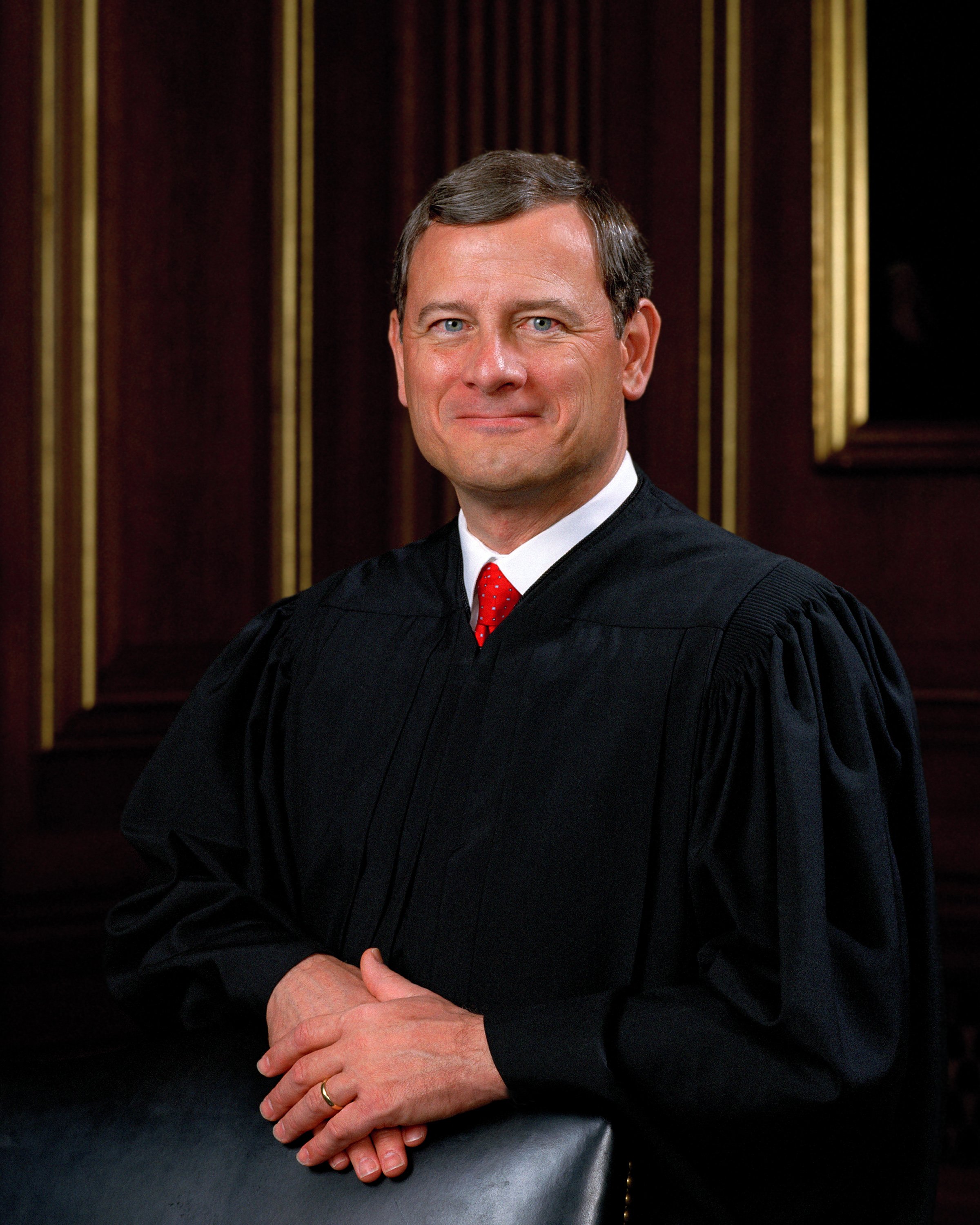John Roberts
 John Glover Roberts Jr. (born January 27, 1955) is an American jurist who has served since 2005 as the 17th chief justice of the United States. Though primarily an institutionalist, he has been described as having a moderate conservative judicial philosophy. Regarded as a swing vote in some cases, Roberts has presided over an ideological shift toward conservative jurisprudence on the high court, in which he has authored key opinions.
John Glover Roberts Jr. (born January 27, 1955) is an American jurist who has served since 2005 as the 17th chief justice of the United States. Though primarily an institutionalist, he has been described as having a moderate conservative judicial philosophy. Regarded as a swing vote in some cases, Roberts has presided over an ideological shift toward conservative jurisprudence on the high court, in which he has authored key opinions.Born in Buffalo, New York, Roberts was raised Catholic in Northwest Indiana and studied at Harvard University, initially intending to become a historian. He graduated in three years with highest distinction, then attended Harvard Law School, where he was the managing editor of the ''Harvard Law Review.'' Roberts later served as a law clerk for Judge Henry Friendly and Justice William Rehnquist and held positions in the Department of Justice from 1989 to 1993 during the presidencies of Ronald Reagan and George H. W. Bush. Roberts then built a leading appellate practice, arguing 39 cases before the Supreme Court.
In 1992, Bush nominated Roberts to the U.S. Court of Appeals for the District of Columbia Circuit, but the Senate did not hold a confirmation vote. In 2003, Roberts was appointed to that circuit court by President George W. Bush, who in 2005 nominated him to the Supreme Court—initially as an associate justice to fill the vacancy left by Justice Sandra Day O'Connor and then to chief justice after William Rehnquist's death. Roberts was confirmed by a Senate vote of 78–22. Aged 50, he was the youngest chief justice since John Marshall, who assumed the office at age 46.
As chief justice, Roberts has authored majority opinions in many landmark cases, including ''National Federation of Independent Business v. Sebelius'' (upholding most sections of the Affordable Care Act), ''Shelby County v. Holder'' (limiting the Voting Rights Act of 1965), ''Trump v. Hawaii'' (expanding presidential powers over immigration), ''Carpenter v. United States'' (expanding digital privacy), ''Students for Fair Admissions v. Harvard'' (overruling race-based admission programs), and ''Trump v. United States'' (outlining the extent of presidential immunity from criminal prosecution). Roberts also presided over President Donald Trump's first impeachment trial. Provided by Wikipedia
-
1
-
2
-
3
-
4
-
5
-
6